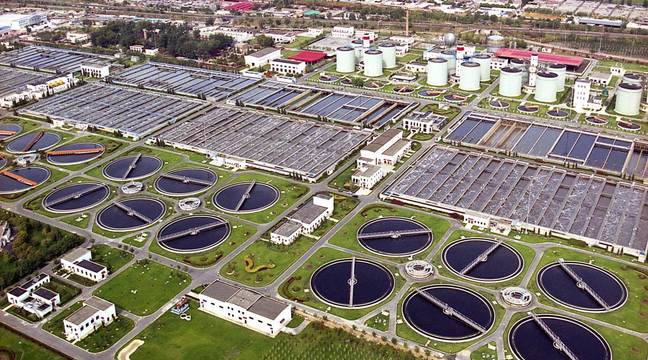
当前课程知识点:Finite Element Method (FEM) Analysis and Applications > 1、Introduction > 1.4 Function approximation > Video 1.4
返回《Finite Element Method (FEM) Analysis and Applications》慕课在线视频课程列表
返回《Finite Element Method (FEM) Analysis and Applications》慕课在线视频列表
关于试函数的问题,关键是要讨论函数的逼近问题
我们以一个一维函数为例
来分析和讨论它的展开和逼近问题
这个f(x)是一个一维函数
它的函数形式是像这样的曲线
我们考虑两种方式来逼近
第一种方式是基于全域的
也就是说是从x0到xl这个定义域
全域的傅里叶级数的展开
那么我们就要取一系列的基底函数
也就是说从φ1到φn
那么第一阶的基底函数
我们取一个sin函数, 就是一个波的
那第二个基底函数,我们取两个波的sin函数
第三阶的基底函数, 我们取三个波的基底函数
当然我们还可以取很多更高阶的
我们把这些这些基底函数进行线性组合
也就是说在每一个基底函数前面乘上相应的系数
这样把它Σ起来
就可以对原函数进行一个逼近
那么注意我们的基底函数, 它是定义在全域上的
也就是说是定义在x0到xl的基底函数
那么c0、c1这些都是系数
第二种展开方式,就是基于子域的展开方式
对于f(x)这个函数
我们假定可以把它分成很多段子域
对于一维问题来说就相当于分出很多子段
在每一段里,我们可以用一个线性函数来逼近它
比如xi到xi+1这个子域
我们用ai+bi*x这个线性函数来逼近它
当然这个ai和bi是两个系数
那不同的子域有不同的线性函数的系数
那同样我们把每一段的这个线性函数把它Σ起来
这样的话,就可以组成或者逼近原来的原始函数
也就是说我们用分段的线性函数
拼出一个函数来逼近原始的函数
那我们看一下它的基底函数
这个基底函数实际上就是每一个子域
或者是段里面的一个线性函数
那我们来比较一下刚才的两种展开方式或者逼近方式的特点
对于复杂的f(x)采用级数展开的方式
就必须用一系列的基底函数
从低阶到高阶的基底函数
来进行线性组合来逼近它
那么这个基底函数,它的特点是一般都是解析函数
它具有高阶的连续性
也就是说高次的导数,它是连续的
由于这个基底函数的连续性高
所以往往只取几阶就可以获得很好的逼近精度
但是它不足的地方就是基底函数比较复杂
要定义在全域上
当然对于一维问题,它相对来说还比较容易做
对于二维、三维问题,怎么构造全域的基底函数
这是非常困难的
对于子域展开的这种方式
我们把这个对象,这个定义域分成若干个子段
在每一段里都用线性函数来逼近
由每一个线性函数
把它拼出一个函数来逼近这个原始函数
但是我们可以看看这个拼出来这个函数
应该说主要的形状逼近应该还是不错的
但是在拼接的地方,它的导数是不连续的
也就是说很多这种的折点
所以说我们可以看出来
它的函数的阶次低,但是它的连续性比较差一些
但是它对整体的逼近程度
也就是说它的形状描述的程度还是不错的
当然为了提高它的精度,我们可以把子域分得更细
同时我们把子域的这个函数
可以用比如刚才说的是线性函数
我们可以用二次函数、三次函数来进行逼近
也可以提高我们逼近的这个连续性的要求
那么它的关键就是
怎么针对复杂的2D、3D情况来
构造出分片或者是分块的试函数
这是里面的一个重点和难点
-Finite element, infinite capabilities
--Video
-1.1 Classification of mechanics:particle、rigid body、deformed body mechanics
--1.1 Test
-1.2 Main points for deformed body mechanics
--1.2 Test
-1.3 Methods to solve differential equation solving method
--1.3 Test
-1.4 Function approximation
--1.4 Test
-1.5 Function approximation defined on complex domains
--1.5 Test
-1.6 The core of finite element: subdomain function approximation for complex domains
--1.6 Test
-1.7 History and software of FEM development
--1.7 Test
-Discussion
-Homework
-2.1 Principles of mechanic analysis of springs
--2.1 Test
-2.2 Comparison between spring element and bar element
--2.2 Test
-2.3 Coordinate transformation of bar element
--2.3 Test
-2.4 An example of a four-bar structure
--2.4 Test
-2.5 ANSYS case analysis of four-bar structure
--ANSYS
-Discussion
-3.1 Mechanical description and basic assumptions for deformed body
--3.1 Test
-3.2 Index notation
--3.2 Test
-3.3 Thoughts on three major variables and three major equations
--3.3 Test
-3.4 Test
-3.4 Construction of equilibrium Equation of Plane Problem
-3.5 Test
-3.5 Construction of strain-displacement relations for plane problems
-3.6 Test
-3.6 Construction of constitutive relations for plane problems
-3.7 Test
-3.7 Two kinds of boundary conditions
- Discussion
-- Discussion
-4.1 Test
-4.1 Discussion of several special cases
-4.2 Test
-4.2 A complete solution of a simple bar under uniaxial tension based on elastic mechanics
-4.3 Test
-4.3 The description and solution of plane beam under pure bending
-4.4 Test
-4.4 Complete description of 3D elastic problem
-4.5 Test
-4.5 Description and understanding of tensor
-Discussion
-5.1 Test
-5.1Main method classification and trial function method for solving deformed body mechanics equation
-5.2 Test
-5.2 Trial function method for solving pure bending beam: residual value method
-5.3 Test
-5.3How to reduce the order of the derivative of trial function
-5.4 Test
-5.4 The principle of virtual work for solving plane bending beam
-5.5 Test
-5.5 The variational basis of the principle of minimum potential energy for solving the plane bending
-5.6 Test
-5.6 The general energy principle of elastic problem
-Discussion
-6.1Test
-6.1 Classic method and finite element method based on trial function
-6.2 Test
-6.2 Natural discretization and approximated discretization in finite element method
-6.3 Test
-6.3 Basic steps in the finite element method
-6.4 Test
-6.4 Comparison of classic method and finite element method
-Discussion
-7.1 Test
-7.1 Construction and MATLAB programming of bar element in local coordinate system
-7.2 Test
-7.2 Construction and MATLAB programming of plane pure bending beam element in local coordinate syste
-7.3 Construction of three-dimensional beam element in local coordinate system
-7.4 Test
-7.4 Beam element coordinate transformation
-7.5 Test
-7.5 Treatment of distributed force
-7.6 Case Analysis and MATLAB programming of portal frame structure
-7.7 ANSYS case analysis of portal frame structure
-8.1 Test
-8.1 Two-dimensional 3-node triangular element and MATLAB programming
-8.2 Test
-8.2 Two-dimensional 4-node rectangular element and MATLAB programming
-8.3 Test
-8.3 Axisymmetric element
-8.4 Test
-8.4 Treatment of distributed force
-8.5 MATLAB programming of 2D plane rectangular thin plate
-8.6 Finite element GUI operation and command flow of a plane rectangular thin plate on ANSYS softwar
-Discussion
-9.1 Three-dimensional 4-node tetrahedral element and MATLAB programming
-9.2 Three-dimensional 8-node hexahedral element and MATLAB programming
-9.3 Principle of the isoparametric element
-9.4Test
-9.4Numerical integration
-9.5 MATLAB programming for typical 2D problems
-9.6 ANSYS analysis case of typical 3Dl problem
-Discussion
-10.1Test
-10.1Node number and storage bandwidth
-10.2Test
-10.2 Properties of shape function matrix and stiffness matrix
-10.3Test
-10.3 Treatment of boundary conditions and calculation of reaction forces
-10.4Test
-10.4 Requirements for construction and convergence of displacement function
-10.5Test
-10.5C0 element and C1 element
-10.6 Test
-10.6 Patch test of element
-10.7 Test
-10.7 Accuracy and property of numerical solutions of finite element analysis
-10.8Test
-10.8 Error and average processing of element stress calculation result
-10.9 Test
-10.9 Error control and the accuracy improving method of h method and p method
-Discussion
-11.1 Test
-11.1 1D high-order element
-11.2 Test
-11.2 2D high-order element
-11.3 Test
-11.3 3D high-order element
-11.4 Test
-11.4 Bending plate element based on thin plate theory
-11.5 Test
-11.5 Sub-structure and super-element
-12.1Test
-12.1 Finite element analysis for structural vibration: basic principle
-12.2 Test
-12.2 Case of finite element analysis for structural vibration
-12.3 Test
-12.3 Finite element analysis for elastic-plastic problems: basic principle
-12.4 Test
-12.4 Finite element analysis for elastic-plastic problems: solving non-linear equations
-Discussion
-13.1 Test
-13.1 Finite element analysis for heat transfer: basic principle
-13.2 Test
-13.2 Case of finite element analysis for heat transfer
-13.3 Test
-13.3 Finite element analysis for thermal stress problems: basic principle
-13.4 Test
-13.4 Finite element analysis for thermal stress problems: solving non-linear equation
-Discussion
-2D problem: finite element analysis of a 2D perforated plate
-3D problem: meshing control of a flower-shaped chuck
-Modal analysis of vibration: Modal analysis of a cable-stayed bridge
-Elastic-plastic analysis: elastic-plastic analysis of a thick-walled cylinder under internal pressur
-Heat transfer analysis: transient problem of temperature field during steel cylinder cooling process
-Thermal stress analysis: temperature and assembly stress analysis of truss structure
-Probability of structure: Probabilistic design analysis of large hydraulic press frame
-Modeling and application of methods: Modeling and analysis of p-type elements for plane problem



